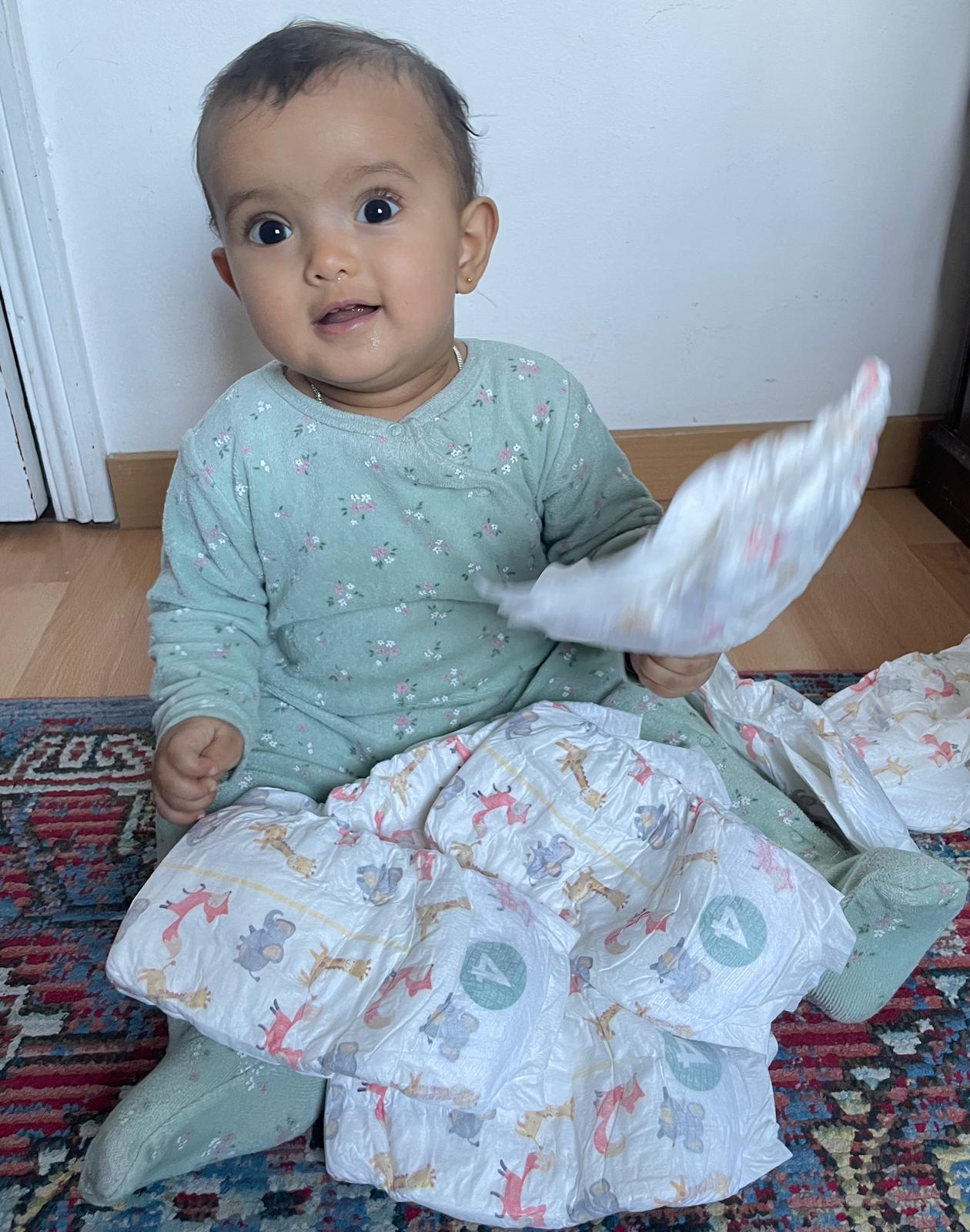Table of Contents
When parenting takes part, baby diapers play a crucial role Every parent takes care of their child by ensuring the comfort hygiene, and convenience of baby diapers. Nowadays there are so many options for diapers that divert parents’ needs among them choosing the right baby diapers is difficult. This article discusses the advantages and disadvantages of the various types of baby diapers and napkins, this article also discusses from disposal to cloth and eco-friendly to hypoallergic.

Types of baby Diapers
In today’s days, the trends of baby’s wearing diapers are growing rapidly. Today modern parents take always alternative options for their children’s comfort. the three main options of diapers chosen by today’s parents are disposable diapers, cloth diaper, and hybrid.
- Disposable Diapers: Disposable baby diapers are the most demanding choices for every parent. Most disposable diapers have absorbing materials that lock moisture, keep the baby dry for hours, and make the baby comfortable. Nowadays, companies are producing modern types of diapers that have leak guards, witness indicators, and breathable cover options
- Convenience: For working parents and traveling .
- Hygiene: It is a single-use product that reduces the risk of infection.
- Wide availability: It can be available in every store and online source.
However, disposable diapers can be more expensive which cannot be afforded by everyone, and its not environmentally friendly there can be many environmental footprints due to non-biodegradable components.
2. Cloth Diapers: The fabrics that are used in cloth baby diapers are cotton, bamboo, or herbs which can be reusable and environment friendly. The Benefits that include cloth diapers are;
- Cost friendly: Cotton diapers can be used many times after purchase it can be also called a one-time investment.
- Sustainability: it is environment friendly which reduces the wastes compared to disposal diapers.
- Gentle on skin: The fabric used are natural which reduces rashes and irritation and babies’ skin.
Having many advantages, cloth diapers require the need to wash rapidly and it is not suitable for traveling.
3. Hybrid diapers: Hybrid baby diapers have a reusable outer shell with both disposable and washable inserts which combine the best of both words their feature is:
- Flexibility: can be customizable according to your needs.
- Reduced waste: compared to traditional disposables it has less trash.
Compared to disposable and cotton diapers it is a good option but they are high in cost and careful assembly is required.
Choosing the Right baby Diaper
When selecting a diaper, consider the following factors:
1. Baby’s Age and Size: Diapers are classified according to weight, not age. Always choose the right size diapers which make baby comfortable and stop leaks and rashes.
2. Skin Sensitivity: Most babies have sensitive skin for them parents should always choose hypoallergic diapers which are free from chemicals. The diapers made from clothes that are environment friendly are a great option for sensitive skin.
3. Lifestyle Needs: The parents who travel the most used disposable and hybrid diapers whereas environment-friendly mindset parents prefer cotton or hybrid diapers.
4. Absorbency and Leak Protection: Guardians should choose diapers which have qualities like high absorbency, secure leg cuffs and leak-proof for better naps for babies.
Proper Diaper Usage and Care
The proper use and care of diapers are important for your baby’s comfort and health.
Using and caring for diapers correctly is essential for your baby’s comfort and health.
1. Changing Frequency: For clean and rash and to avoid diaper rash to babies changing the diapers frequently is necessary.
- Newborns: Every 2-3 hours or immediately after they soil
- Infants: Every 3-4 hours.
- Toddlers: Every 4-5 hours or as needed.
2. Cleaning and Skin Care:
- Always clean the area covered by diapers with wipes or wet cotton cloth.
- Let the skin to air dry before wearing on a new diaper.
- Always apply diaper rash cream avoid and get treat from rashes.
3. Washing Cloth Diapers:
- To remove the stains wash the diaper immediately.
- Baby-safe detergent and use hot water for proper wash
- To maintain the quality of fabric use air dry on low heat.
4. Proper Disposal of Disposables:
- Roll and secure used diapers with their adhesive tabs.
- Dispose of them in a sealed bag or diaper pail to control odors.
Environmental Considerations
Diapers increase the waste in the house. for every parents it is the better option to adopt eco-friendly products to reduce wastage.
- Always use biodegradable disposables if available.
- Use cotton fabric cloth to minimize landfill waste.
- Always wash the napkins when the load is complete save water and energy.
Tips for Budget-Friendly Diapering
when you buy the baby diapers or napkins it can be expensive, but some strategic planning can help:
- Always buy the diapers in bulk to minimize cost instead of buying a single piece.
- Always look for offers and discounts.
- Always invest in the best cotton cloth diapers for long-term savings.
The Emotional Bond of Diapering
while changing the diapers parents can directly build a bond with their babies so use more time taking, singing, making eye contact, and encouraging connection and trust.
Conclusion
Every parent chooses the best diapers and cares for their baby’s needs without any doubts. By knowing the good options and implementing them in practice, you can make your child happy, clean, and comfortable. Whether parents buy disposable, clothes or hybrid, the main purpose is that work perfectly for your family’s lifestyle and values.

TUNpM ZmA ZwPdYj beMpQY HdWVpBO vbCdn